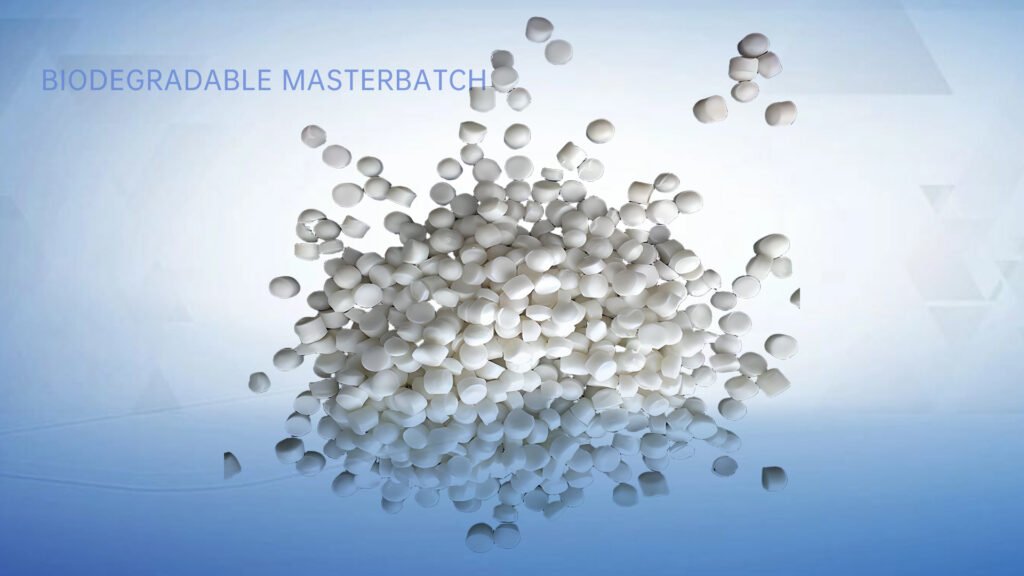Twin screw extruders serve as the core equipment for producing color masterbatches. Their high shear forces ensure the uniform dispersion of pigments/additives within the polymer carrier resin, preventing color inconsistency.
Sectional temperature control (100-400°C) accommodates the melting and compounding requirements of various resins (e.g., PE, PP, ABS) while preventing thermal degradation of pigments. Compatibility with multiple feeding systems (liquid color pastes, powder pigments) is standard. The extruders can be extended with side feeders and vacuum devolatilization units to meet the demands of high-concentration or functional masterbatches (e.g., flame retardant).
Different models of twin screw compounding extruders cater to varying production capacities, with output rates ranging from 10 to 1000 kg/h. They can utilize Siemens PLC control systems to achieve continuous and stable pelletization. Pelletizing methods include water-cooling strand pelletizer, water-ring pelletizer, underwater pelletizer, and air-cooled strand pelletizer.
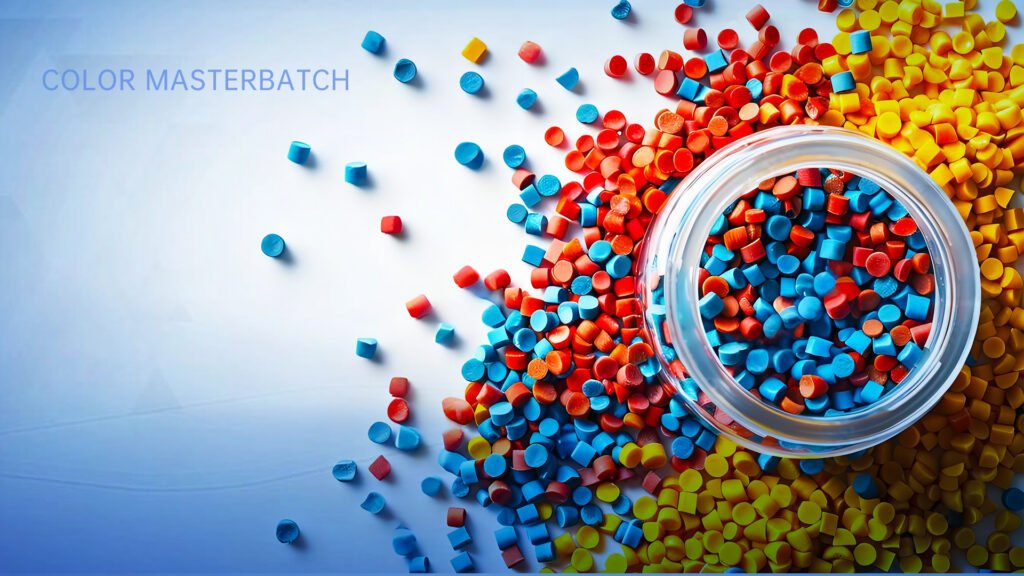
There are multiple equipment configurations for producing filler masterbatches, such as:
- Twin screw extruder with water-cooling strand pelletizing lines
- High speed mixer + Twin screw extruder + Air-cooling hot-face pelletizing lines
- Kneader + Single screw extruder + Air-cooling hot-face pelletizing lines
- Kneader + Twin screw extruder + Air-cooling hot-face pelletizing lines
- High speed mixer + Twin screw extruder + Single screw extruder + Air-cooling hot-face pelletizing lines
- Kneader + Twin screw extruder + Water-ring pelletizing lines
These production lines provide high shear forces, ensuring fillers (such as calcium carbonate, talc) are uniformly and finely dispersed within the resin carrier, preventing agglomeration. Parameters like temperature, screw speed, and feed rate can be adjusted to accommodate different combinations of resins (PP, PE, PS, etc.) and fillers (type, particle size, proportion). Some lines are specifically optimized for processing high filler loadings (up to 70-90%), overcoming the processing difficulties associated with high filling. They ensure thorough melting and plasticization of the material while effectively removing moisture and low-molecular-weight volatiles. This type of equipment is essential for the efficient, uniform dispersion of fillers within a plastic carrier and the large-scale production of functional filler masterbatches.
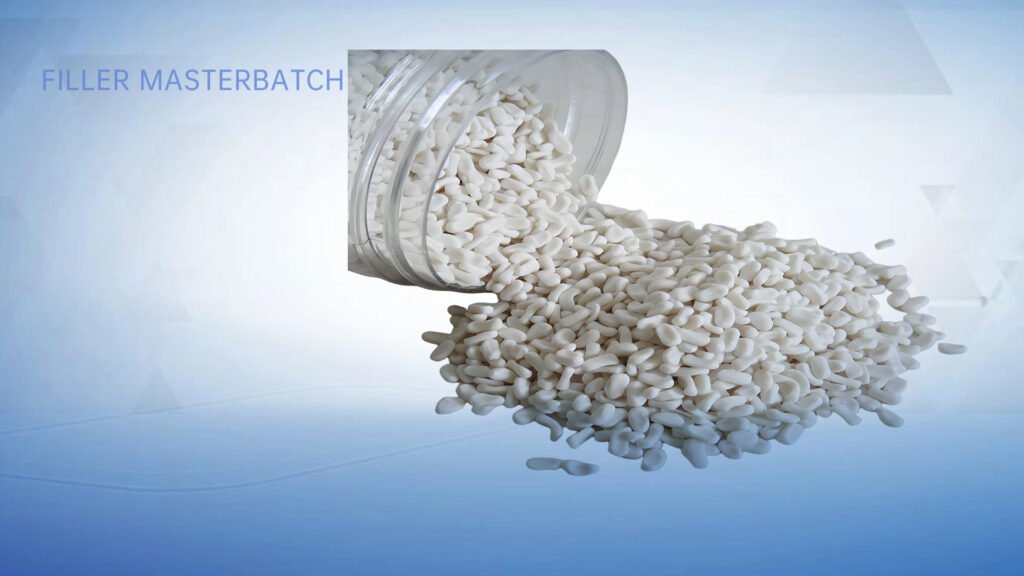
Engineering Plastic Modification and Pelletizing involves adding various modifiers (such as reinforcing fibers, toughening agents, flame retardants, stabilizers, fillers, functional additives, etc.) to base resins (e.g., PP, PE, PA, PC, PBT). This mixture is then homogeneously dispersed and blended in a molten state, typically within a twin screw extruder. The blended material is subsequently extruded into strands and cut into pellets.
This process aims to precisely optimize specific material properties, including mechanical strength, heat resistance, flame retardancy, dimensional stability, wear resistance, and electrical conductivity, to meet demanding application requirements. The modified pellets can be directly used in molding processes such as injection molding and extrusion.
Its core value lies in overcoming the performance limitations of base resins and enabling functional customization. It is an indispensable front-end process for manufacturing high-performance plastic components in industries such as automotive parts, electrical & electronic devices, aerospace, and high-end equipment. This technology significantly expands the application boundaries and added value of engineering plastics.
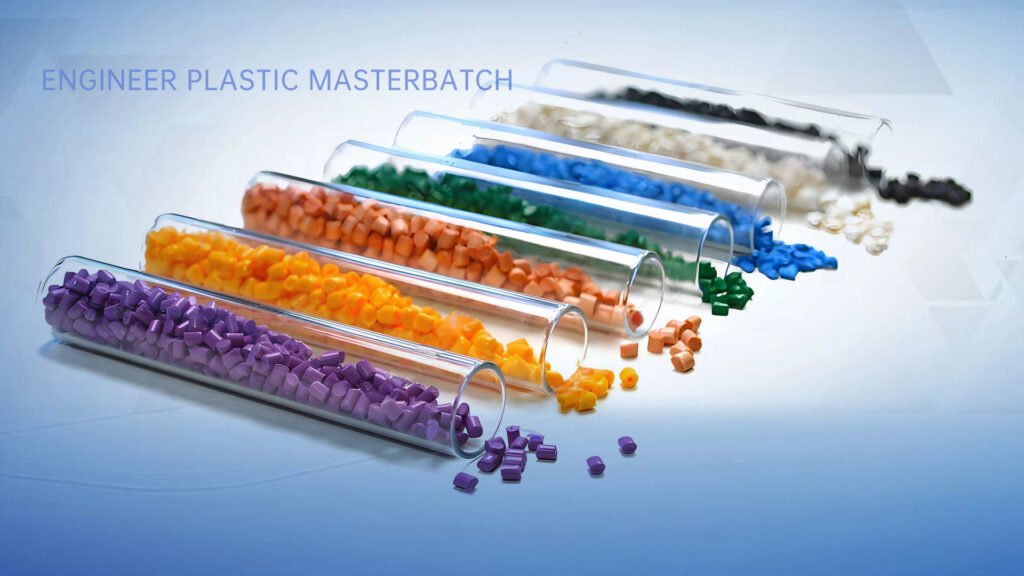
PVC Cable Compound: Balancing Electrical Properties, Flexibility & Durability for Power & Communication Applications
PVC cable compounds are key materials in the power and communication sectors, achieving a balance of electrical properties, flexibility, and durability through formulation adjustments.
Basic PVC Cable Compound Formula:
- 20-70% PVC Resin
- 20-50% Plasticizer (e.g., DOP)
- 3-8% Heat Stabilizer
- 5-20% Filler (e.g., Calcium Carbonate)
- 5-2% Lubricant (e.g., Paraffin Wax, Stearic Acid)
PVC Cable Compound Types:
- Insulation Compound:Requires high electrical insulation (Volume Resistivity > 10¹² Ω·m). Used for inner conductor insulation. Features lower plasticizer content and excellent dielectric properties.
- Sheathing Compound:Focuses on mechanical strength, weather resistance, and flame retardancy (e.g., per GB/T 8815 standard). Encapsulates the insulation layer. Contains higher plasticizer levels and may include additives like carbon black for UV resistance.
PVC Cable Compound Production Process:
- Raw Material Weighing:Precise measurement of all components.
- High-Speed Hot Mixing:PVC resin, plasticizer, stabilizer, etc., are rapidly pre-mixed in a high-speed mixer at 80-120°C. This promotes plasticizer absorption; mixing uniformity critically impacts subsequent processing.
- Low-Speed Cool Mixing:The hot-mixed material is cooled to 40-50°C in a low-speed mixer to prevent agglomeration and thermal degradation, preparing it for extrusion.
- Twin-Stage Extruder Compounding & Plasticization:The mixed material is fed into the hopper of a twin-screw extruder. Continuous compounding and plasticization occur under precise temperature control (across 8 heating zones), ensuring efficient dispersion of fillers and flame retardants.
- Die Face Extrusion:The plasticized melt is extruded through a die head.
- Hot Die Face Cutting & Air Cooling:Strands from the die are directly cut into pellets (hot die face cutting) and conveyed via a pelletizing air stream to a cyclone receiver.
- Screening:The pellets are cooled and classified via an air-cooled vibrating screen.
- Packaging:Qualified pellets are conveyed to storage silos for packaging.
Cable compounds also include PE low-smoke zero-halogen (LSZH) materials and XLPE compounds (used in 10kV/35kV cables, for example). Different formulations and production capacity requirements can be met with tailored equipment configurations.
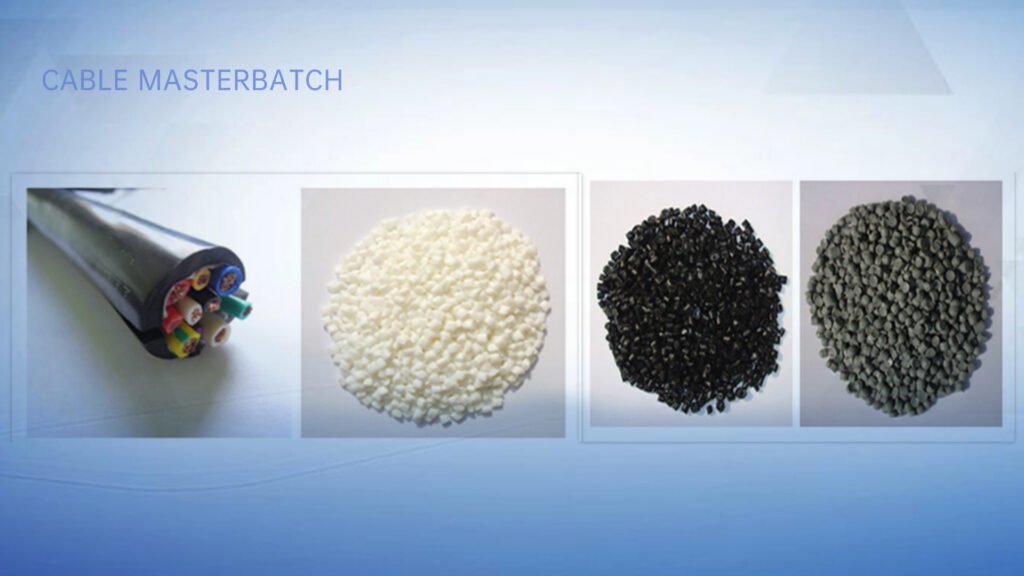
Thermoplastic Elastomers (TPE)
Physical crosslinking via microphase separation of hard/soft segments, allowing repeated processing and pelletizing.
Primary Types:
Type | Structure | Properties | Applications |
TPR/TPS((Styrenic) | SBS, SEBS | Soft, easy to color | Shoe soles, toys, grips |
TPO(Polyolefin) | PP/EPDM blend | Weather-resistant, low cost | Auto bumpers, waterproof sheets |
TPV (Dynamically Vulcanized) | PP/EPDM highly cross-linked | Heat-resistant (120℃), fatigue-resistant | Auto seals, industrial hoses |
TPU(Polyurethane) | Hard segment (MDI) + Soft segment (polyether/ester) | High abrasion resistance, tear strength | Phone cases, sports gear |
TPEE(Polyester) | Polyether/polyester block | High elastic recovery, oil resistance | Gears, oil tube sleeves |
Common Pelletizing Methods:
Underwater Pelletizer:
Melt extruded through die → Immediately cut by rotating blades underwater → Smooth, uniform pellets.Suitable for: TPE, SBS.
Water-cooling Strand Pelletizer:
Melt extruded into strands → Cooled in water bath → Cut by pelletizer.Low cost but prone to agglomeration; used for EPDM, silicone rubber.
Water-Ring Pelletizer:
Melt cut at die face → Simultaneously cooled by water spray → Ellipsoidal pellets (shape varies with hardness).
Generic SEBS-based TPE Formulation (Shore A 80, for tool handles)
Component | Ratio | Function |
SEBS (YH-503) | 50% | Elastic matrix, rebound resilience |
Paraffin oil (KN4010) | 30% | Softening, reduces hardness to Shore A 80 |
PP (T30S) | 15% | Enhances rigidity, improves flowability |
CaCO₃ (light) | 4% | Cost reduction, slight hardening |
Antioxidant 1010 | 0.3% | Prevents thermal degradation |
Zinc stearate | 0.7% | Lubrication, mold release |
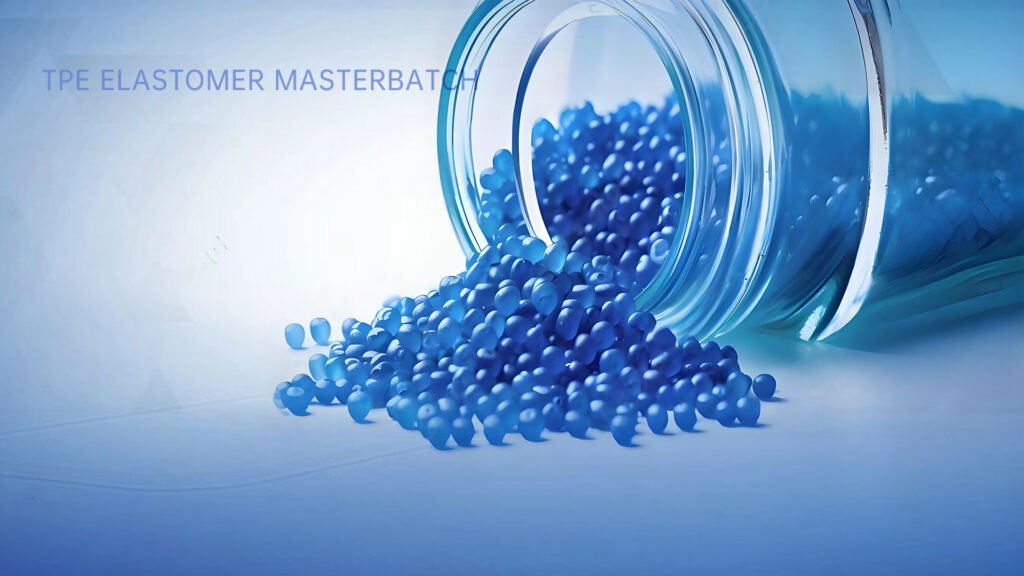
Biodegradable pellets are a novel type of environmentally friendly material base that can be decomposed by microorganisms in natural environments (such as soil, compost, and water bodies) into water, carbon dioxide (or methane), and biomass. They are primarily derived from:
- Renewable Resources:Such as corn starch, sugarcane, potatoes, and other plants.
- Bio-based Synthetic Materials:Such as Polylactic Acid (PLA), Polyhydroxyalkanoates (PHA).
- Petroleum-based Biodegradable Materials:Such as Poly(butylene adipate-co-terephthalate) (PBAT), which ultimately biodegrades completely.
Their core advantage lies in addressing “white pollution.” While traditional plastics take centuries to degrade, certified biodegradable materials typically decompose within months (e.g., 3-6 months) under suitable conditions (industrial composting), significantly reducing persistent plastic waste in the environment. They are particularly suitable for:
- Food packaging (bags, containers, cutlery)
- Agricultural mulch film
- Daily-use plastic bags
- Medical supplies (some non-implantable items)
Biodegradable pellets are driving the green transformation of industries like packaging and agriculture, serving as a key material in building a circular economy and tackling the challenge of plastic pollution. Choosing them means reducing the burden on our planet.
Biodegradable masterbatches are primarily produced by melt-blending resins like PLA/PBAT/PBS/PHA/PHB with corn starch/wood flour/bamboo powder/calcium carbonate/talc, and additives.
Typical Base Formula (PLA/PBAT Blend)
Composition | Percentage (wt%) | Role |
PLA | 50-60% | Provides rigidity & biodegradable backbone |
PBAT | 30-40% | Improves toughness & processing flowability |
Epoxy Chain Extender | 0.3-1% | Enhances PLA/PBAT compatibility |
Plasticizer | 5-10% | Reduces brittleness, increases ductility |
Calcium Carbonate | 5-15% | Reduces cost, increases hardness |
Lubricant | 0.5-1% | Prevents mold sticking, improves surface finish |
